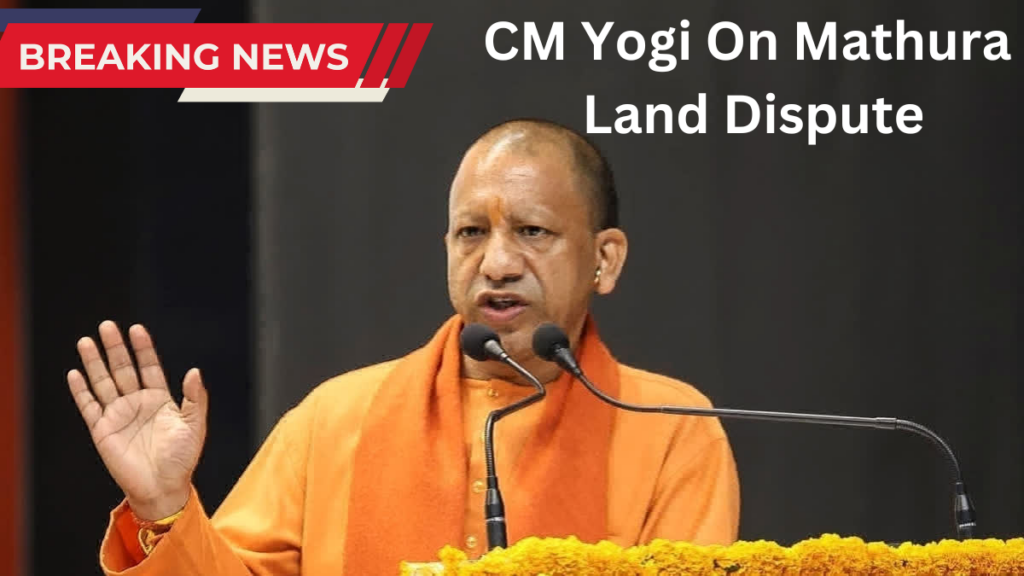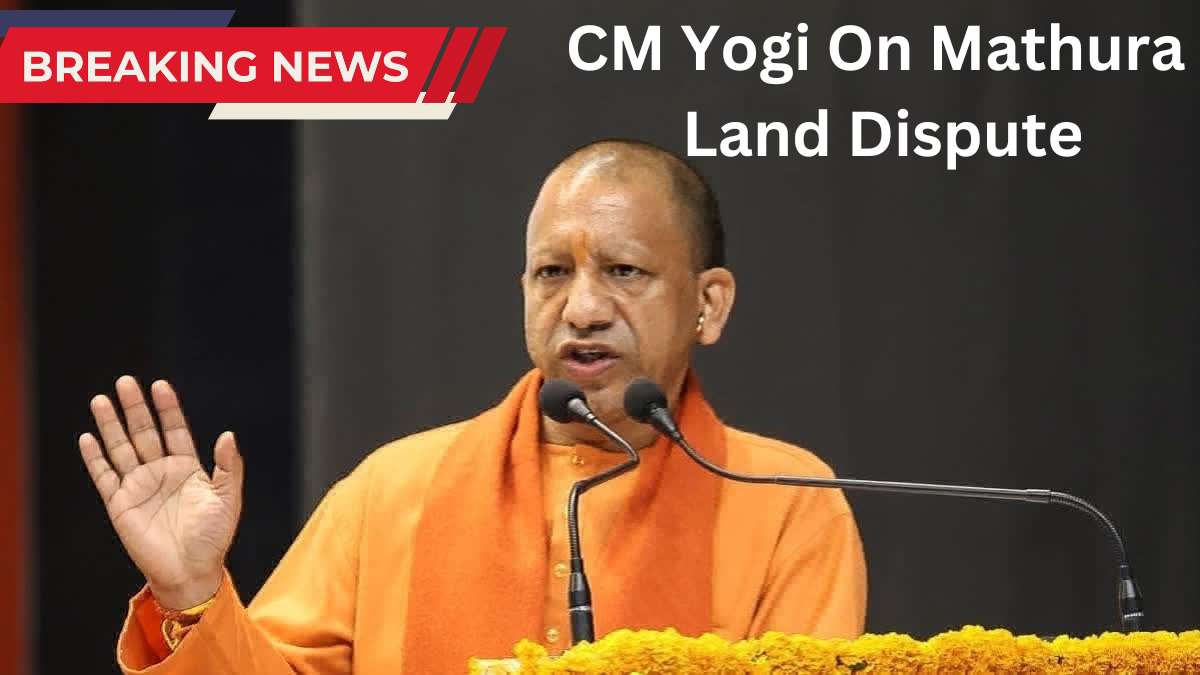In a recent statement that has sparked considerable discussion across Uttar Pradesh, Chief Minister Yogi Adityanath addressed the ongoing controversies that have emerged around his government’s actions, particularly in relation to the bulldozer action, the Sambhal row, and the ongoing religious site dispute in Mathura. Adityanath made it clear that his government operates strictly within the legal framework and that sometimes, tough measures are necessary to maintain law and order in a state as diverse and dynamic as Uttar Pradesh.

Bulldozer Action: Legal Enforcement and Consequences
The bulldozer action has become a hallmark of the Yogi Adityanath-led administration. The government’s use of bulldozers to demolish illegal structures has often attracted both praise and criticism. Critics argue that the actions are disproportionate and targeted against specific communities, while supporters claim they are necessary to uphold the rule of law. In response to these criticisms, the Chief Minister emphasized the importance of acting within the legal framework, reaffirming that the government will take action against those who violate laws and regulations.
Enforcing the Law in a Firm Manner
Yogi Adityanath stated that sometimes people need to be spoken to in a manner that they understand. In his address, he clarified that the bulldozer actions were not arbitrary but were taken after legal procedures were followed.
-
Legal Framework: “The government is operating within the law,” he said. The Chief Minister further explained that the bulldozer action serves as a deterrent to those who break the law, ensuring that the justice system is followed.
-
Justice for All: Adityanath reinforced that justice would be served for all individuals who follow the legal system. “Those who believe in justice will see it delivered for them. But for those who try to take matters into their own hands, they will learn that their actions have consequences within the legal framework,” he asserted.
-
Responding to Violence: The Chief Minister also addressed concerns about the use of force in cases involving violence. He was clear that if someone poses a threat to law and order with violent actions, the government will respond in kind. “If someone comes to attack us with violence, we will respond accordingly. We cannot stand idly by,” he added.
The Mathura Dispute: A Delicate Religious Issue
Mathura, the birthplace of Lord Krishna, holds immense religious significance for millions of people, making it a highly sensitive issue when disputes arise in this region. The ongoing dispute over religious sites in Mathura has been a point of tension, and Chief Minister Yogi Adityanath addressed these concerns head-on in his recent statement.
Following Court Orders to Maintain Peace
Adityanath explained that the UP government is fully committed to adhering to the directives issued by the court, ensuring that no unnecessary escalation takes place in the area.
-
Court’s Role: “We are following the orders of the court,” he said, emphasizing that the court’s rulings are guiding the government’s actions in this sensitive matter. He further remarked, “Or else, a lot could have happened there,” suggesting that had the government not followed the legal process, tensions could have escalated significantly.
-
The Importance of Mathura: Adityanath also acknowledged the religious significance of Mathura, saying, “Why should we not raise the issue of Mathura? Isn’t Mathura the birthplace of Shri Krishna?” This remark highlights the deep connection that the people of Uttar Pradesh and Hindus across the world have to Mathura, which is often referred to as one of the holiest cities in Hinduism.
Handling Religious Sensitivities
While maintaining the need for legal adherence, the Chief Minister highlighted the delicate balance between law and religion, pointing out that Mathura is a highly sensitive religious site that demands careful management to avoid conflicts and maintain peace.
The Sambhal Row: Uncovering the Truth and Legal Boundaries
The Sambhal row has emerged as one of the latest points of contention in Uttar Pradesh’s political landscape. The controversy centers around allegations that mosques have been constructed on what some claim to be “Hindu sites.” The Chief Minister’s response to the Sambhal issue was unequivocal: the government is working within the legal framework to address the situation.
The Issue of Religious Sites
Yogi Adityanath raised concerns about the construction of mosques on Hindu religious sites. He questioned whether such constructions were in line with Islamic teachings, referring to the principles of Islam that forbid building religious structures on sites that are deemed sacred by other religions.
-
Islamic Principles: The Chief Minister argued that Islam, as a religion, does not accept the building of mosques on Hindu temples or places of worship. “Islam says that any Hindu temple or any Hindu house made by you, any worship place is not accepted by God,” he stated.
-
A Call for Investigation: Adityanath assured that the government is actively investigating the situation and vowed to uncover the truth. He pointed out that Sambhal is home to 64 pilgrimage sites, and the government has already identified 54 of them. “Whatever it is, we will find it. We will tell the world what happened in Sambhal,” he added.
Legal Action within the Framework
While discussing the actions taken, the Chief Minister made it clear that the government would continue to act in accordance with the law. He reaffirmed that individuals have the freedom to worship anywhere, but the government would ensure that any violations of religious principles are rectified.
-
Freedom of Worship: “You have complete freedom of worship,” Adityanath said, allowing religious structures to be built in accordance with the law. However, he maintained that deviations from religious doctrines must be addressed to avoid future conflicts.
Summary of Key Points
| Key Issues | Details |
|---|---|
| Bulldozer Action | Strict enforcement of the law, with a firm stance on consequences for lawbreakers. |
| Mathura Dispute | Following court orders to ensure peace and avoid escalation in this sensitive religious area. |
| Sambhal Controversy | Investigating allegations of mosque construction on Hindu sites, while respecting freedom of worship. |
| Religious Sensitivities | Ensuring that religious principles are adhered to, while maintaining peace and law and order. |
FAQs
-
What is the government’s stance on the bulldozer action in Uttar Pradesh?
-
Chief Minister Yogi Adityanath defended the bulldozer action, stating that it is a necessary step to enforce the law and maintain order. He emphasized that the government follows legal processes before taking action.
-
-
What is the government’s approach regarding the Mathura dispute?
-
The Chief Minister affirmed that the government is strictly following court orders in dealing with the religious site dispute in Mathura, ensuring that tensions are managed legally and peacefully.
-
-
How is the government handling the Sambhal controversy?
-
The government is investigating the construction of mosques on alleged Hindu sites and ensuring that any legal and religious deviations are addressed within the framework of the law.
-
-
Does the government support freedom of worship?
-
Yes, Yogi Adityanath clarified that the government supports the freedom of worship, but it will act when there are violations of religious principles or laws.
-
In conclusion, Chief Minister Yogi Adityanath’s responses reflect a firm belief in upholding the law, respecting religious principles, and ensuring that the actions of the government are always within the legal framework. His leadership remains a subject of intense debate, especially in the context of Uttar Pradesh’s complex social and religious fabric.
